Another Bargain Summer Beach Destination?
Continuing our quest for an August European beach, we cast our sights north from Poland into the Baltic countries. Almost as far north as Scandinavia without the price tag. The Baltics are made up of three countries, Estonia to the north, Latvia in the middle, and Lithuania to the south. Our original plan was to visit all three countries but decided that would be rushed. We choose Latvia first because its capital, Riga, was the hub for budget carrier airBaltic, providing good air connections to the rest of Europe.
From Gdańsk, Poland, a short 2-hour flight on airBaltic landed us in Riga, Latvia. Our first time in any Baltic country and our first time in a former Soviet Union country! From the airport to our Airbnb was about a half hour ride. We used Bolt, the Uber/Lift in this part of the world. We had a little difficulty figuring out where at the airport the driver was waiting for us, but Ian finally found him on another level.
Our Neighborhood in Riga

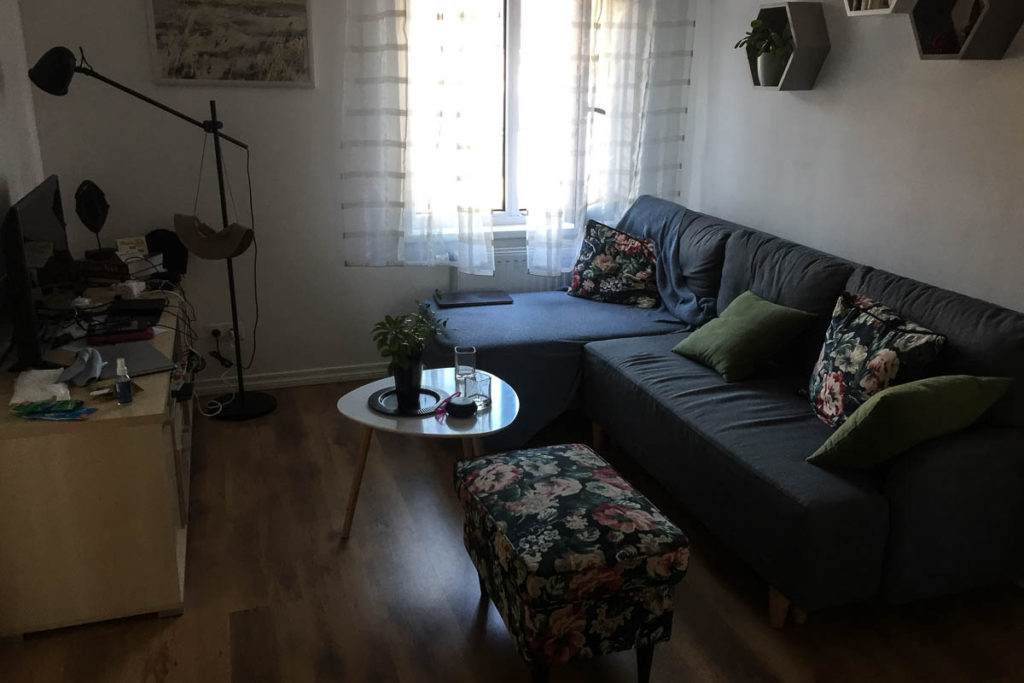
The Airbnb apartment we had here was comfortable and nicely decorated, just a bit small. The laundry on the drying rack couldn’t be in the same room as us. The neighborhood was residential, apparently in the slow process of becoming gentrified, but it was fine. Our biggest problem was that it was at least a half hour walk to the city center. We could have taken public transportation but found for two of us Bolt was about the same price and considerably more efficient.


Some pluses in our neighborhood were lots of grocery stores to explore and the Laima chocolate store right across the street from our Airbnb. Laima is the national chocolate brand of Latvia. Also, a few blocks from our apartment was one of several street art murals throughout the city, but this one is the largest graffiti mural in the Baltics. Titled “Saule, Pērkons, Daugava”, it was painted on the side of a building by two of Riga’s most famous street artists to celebrate Riga as the European Capital of Culture in 2014. “Saule, Pērkons, Daugava” is translated Sun, Thunder, Daugava (a river) and is apparently the name of a song.
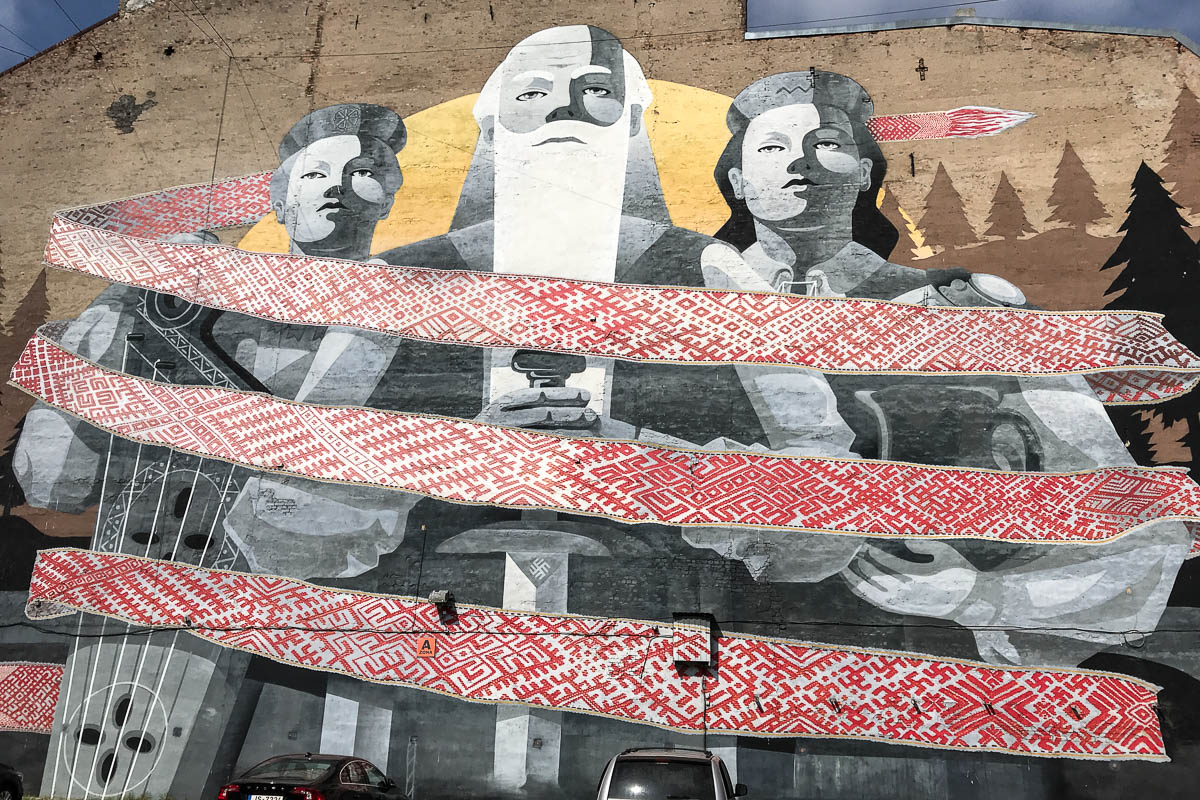
Riga Overall Impression
We wouldn’t call Riga a particularly visually attractive city. While there are some interesting streets and buildings and pretty squares, the city has a mish mash feel to it. A city in transition, a little rough around the edges. It reminded both of us of Sarajevo. Decaying wooden buildings, sitting next to beautiful restored buildings, sitting next to an ugly Communist tower.

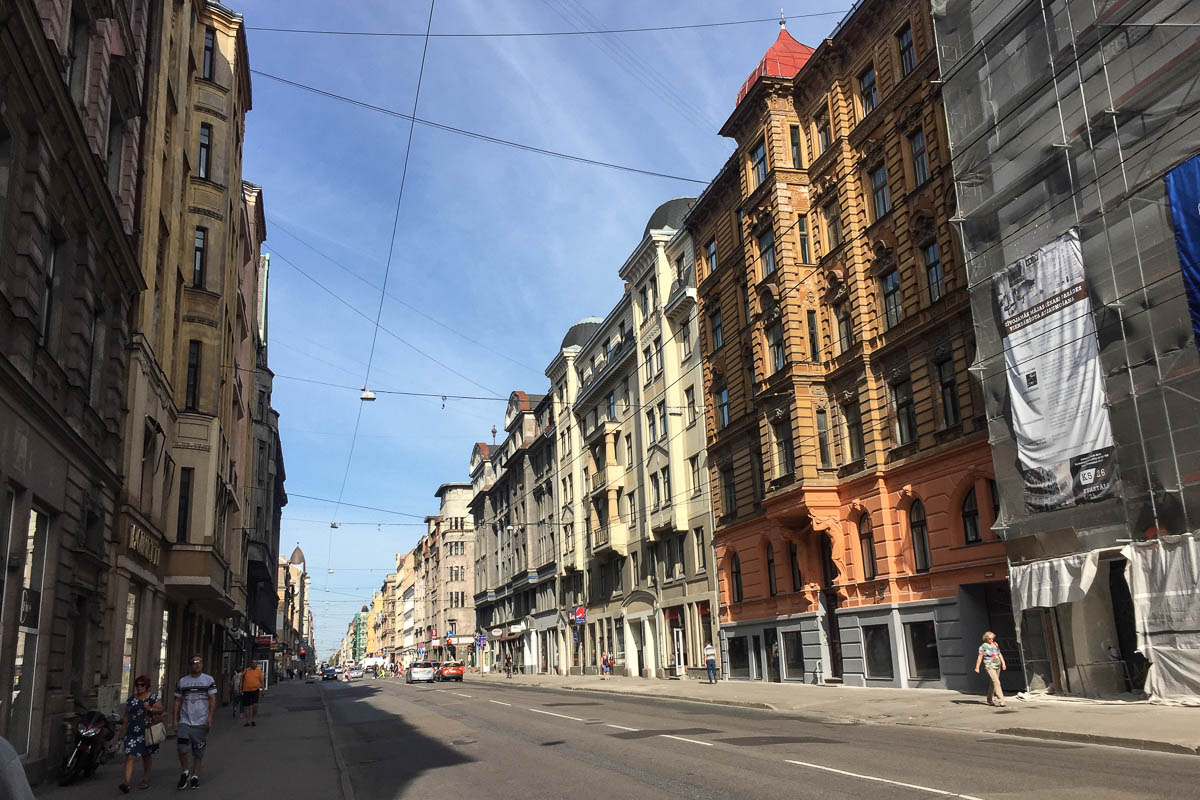
But what it does have is large amounts of green space. As we were walking around the city, no sooner would we finish walking past one park than we would come across another.
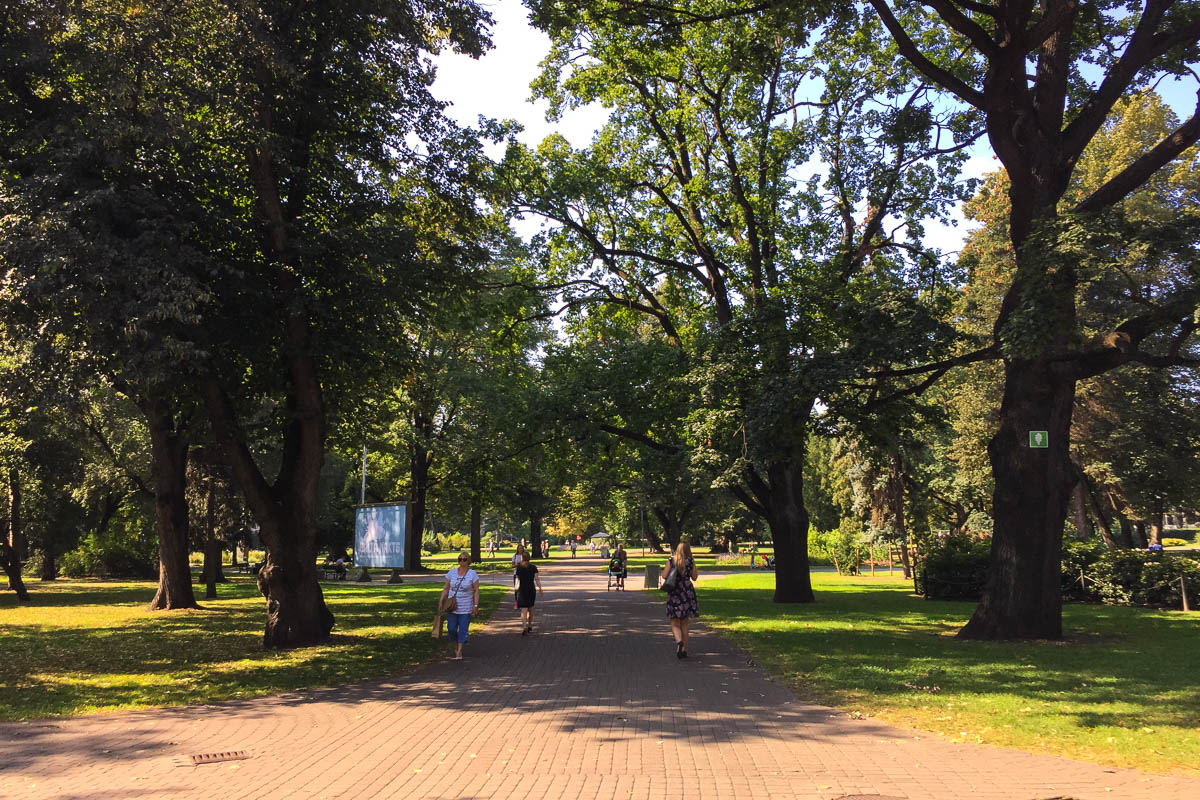

The Latvian language is a bit of a challenge, but nowhere near as much as Polish. Whereas Polish has a shortage of vowels, Latvian has bit too many. “Latvia, I’d like to buy a vowel.” – Poland
Public Transportation in and Around Riga
Riga has a variety of public transportation options. As previously mentioned, Bolt is an inexpensive option, and here Bolt cars, unlike Uber or Lyft, have the Bolt logo on their sides. We also saw buses, trams, trolley-buses, and minibuses (vans), the last going to various neighborhoods on the outskirts of the city. An unusual (for us) sight was a track-washing vehicle on tram tracks. A ticket was good for one ride, a transfer required a new ticket. We also used inexpensive local trains to go out to the beach.
Old Town Riga Walking Tour
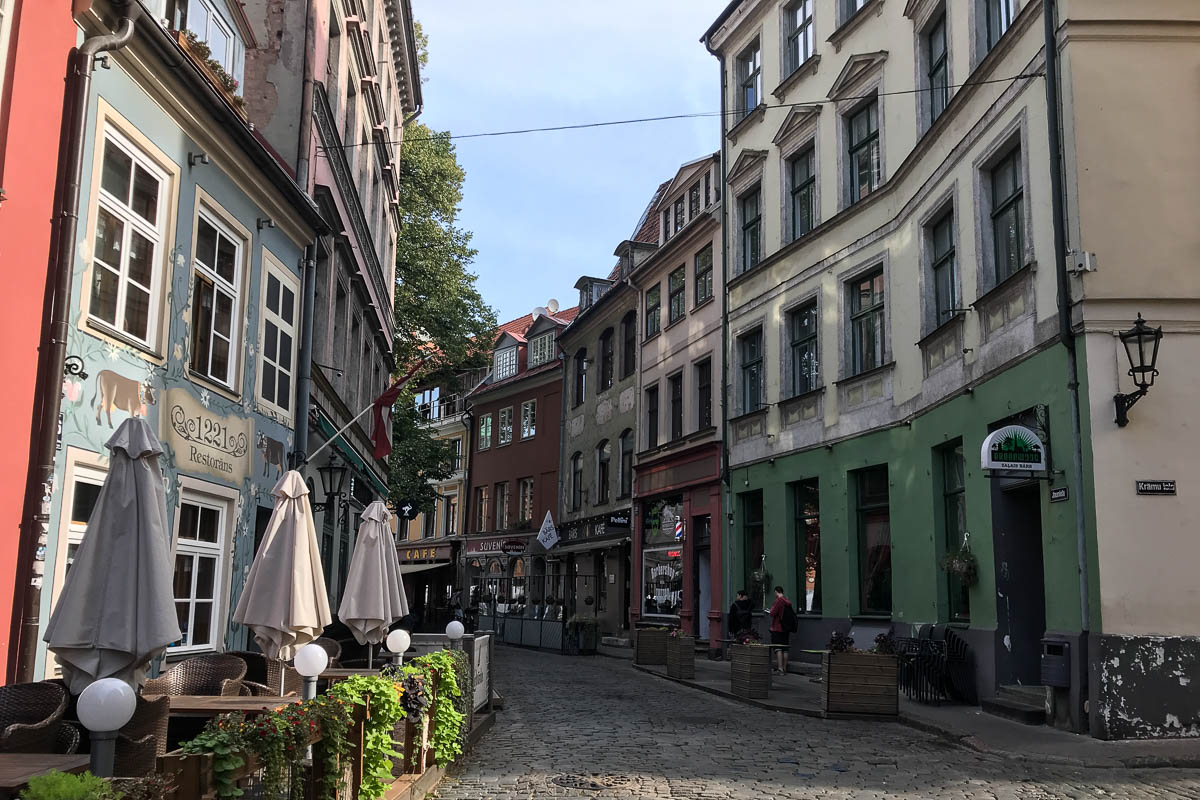

As usual, we did a walking tour covering a section of the top sights. We learned about the history of Riga and saw the Dome Square and Riga Cathedral, St. Peter’s Church, the Town Hall Square, the Freedom Monument, the Three Brothers (these are buildings), and other sights.


House of Blackheads
Along the way, we stopped in front of House of Blackheads, considered one of Riga’s most magnificent buildings. Built during the 14th century, most of the ornamentation was added three centuries later. This building housed the Brotherhood of Blackheads, a guild of unmarried merchants, shipowners, and foreigners. It was bombed by the Germans, then the remains destroyed by the Soviets; it was rebuilt to its current state at the end of the last century.
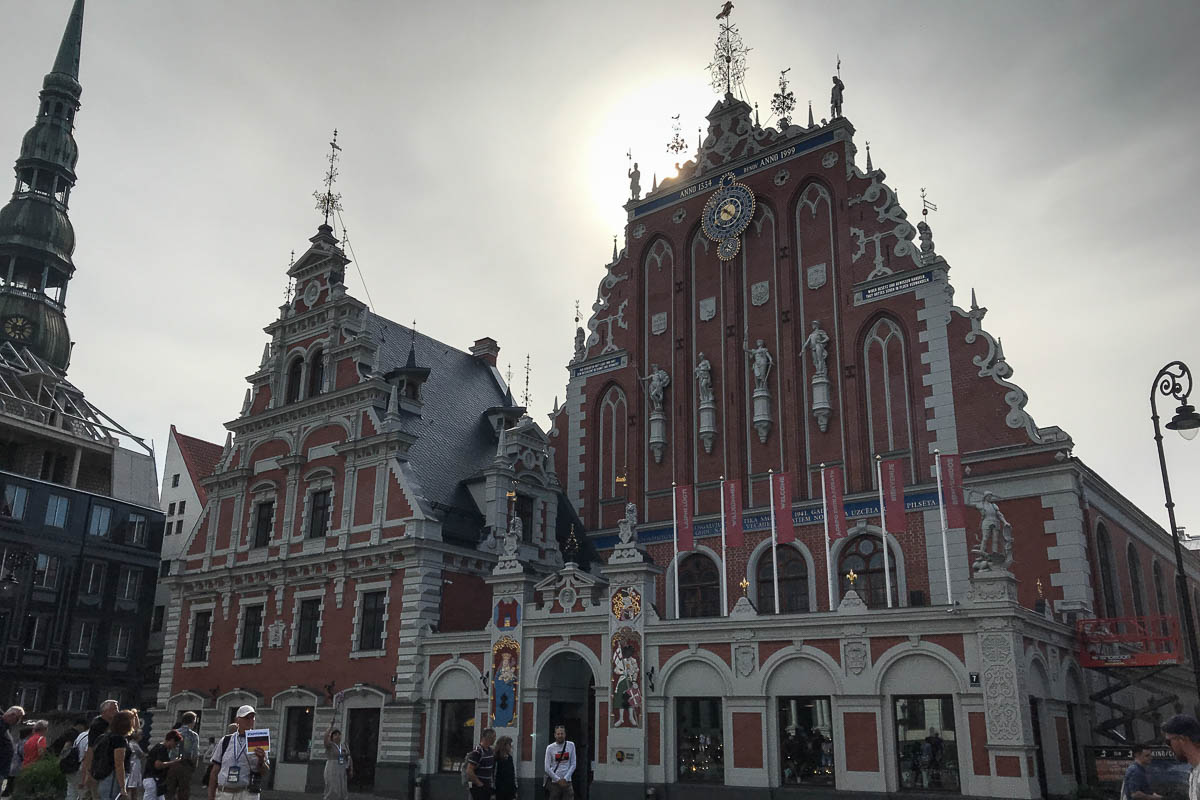
The Cat House
On the tour, we walked by and learned the legend of The Cat House. This unusual yellow building was built in the early twentieth century by a wealthy merchant. One popular legend is that the owner placed two copper cat sculptures on the turret rooftops with arched backs and tails turned toward the house of the Great Guild because he was refused membership in the guild. The city later ordered that the cats be turned to face the Guild.

The Baltic Way
Our tour guide took us to the site of where the Baltic Way passed through Riga near the Freedom Monument. The Baltic Way occurred on August 23, 1989 on the 50th anniversary of the secret Hitler-Stalin Pact. This peaceful demonstration consisted of approximately two million people joining hands to form a 600 km (373 mi) long human chain through the Baltic countries (Estonia, Latvia, and Lithuania). This event gave impetus to freedom from Communism.
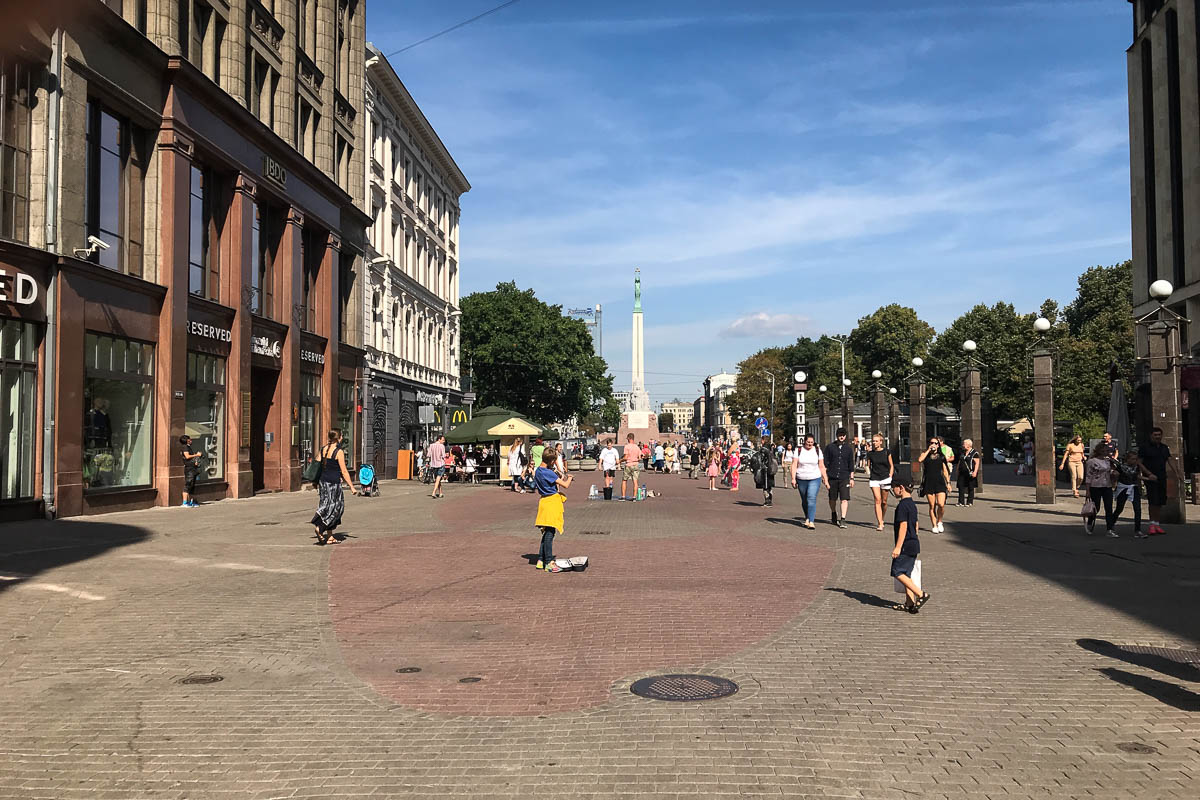
Interesting and sad fact: Latvia has lost 30% of its population since the country joined the EU in 2004.
Other Sights Visited on Our Own
Our usual wandering through a city took us past the impressive and beautifully landscaped Latvian National Opera House. This building was in a more upscale neighborhood with wider streets and possibly Riga’s largest park.

We also walked down Alberta iela (Albert Street), known for its Art Nouveau buildings. The street was named after Bishop Albert, who founded Riga in 1201, and construction of these elaborate buildings began in 1901.

Riga Central Market
Built in the 1920’s, the Riga Central Market is one of the largest (if not the largest – guess it depends who you ask) markets in Europe. The five indoor pavilions were constructed using old German Zeppelin hangars.
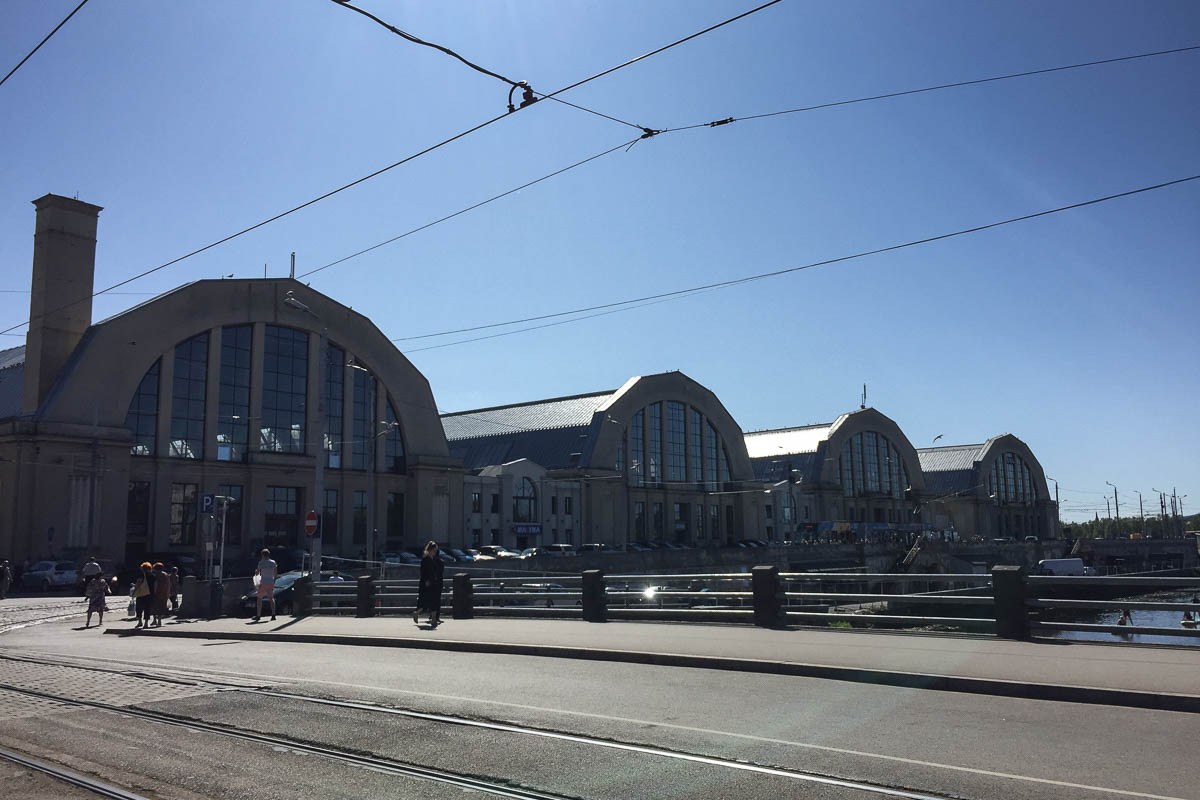
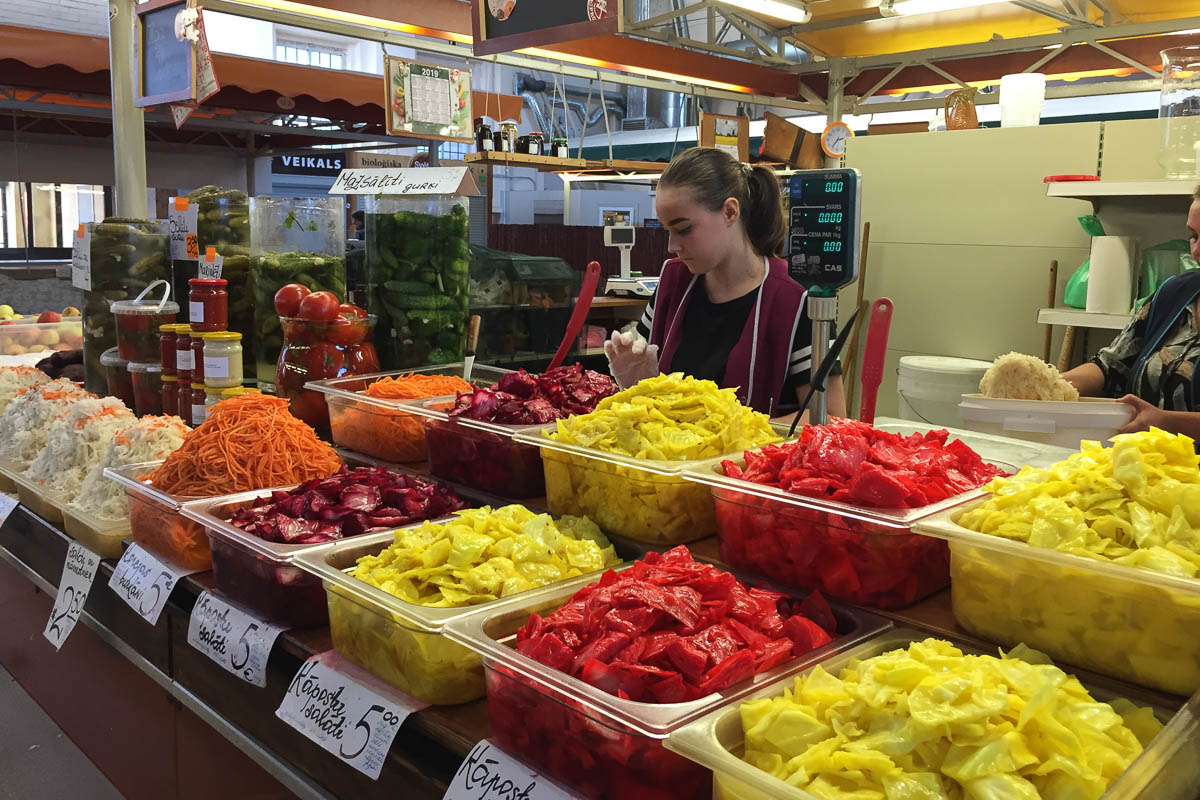
Plus, all the outdoor spaces around and between the pavilions are loaded with merchandise, particularly fresh produce. We were there in summer and are guessing that a lot moves indoors in winter. Although the hangars had tons of tempting (mostly) food items, we noticed some empty spaces. The variety of foods on offer was extensive! Tons of smoked fish, large and small! Also varieties of pickles and pickled cabbage and other vegetables! Enticing cakes, cookies, and pastries, and the wonderful local black bread!
Latvian Food
Latvia has four seasons, and Latvians’ food choices make the most of what’s available each season. Common foods include potatoes, pork, smoked fish, cottage cheese, beets, mushrooms, cabbage, dark caraway seeds, tomatoes and cucumbers, and summer berries. And of course, that yummy dark rye bread!
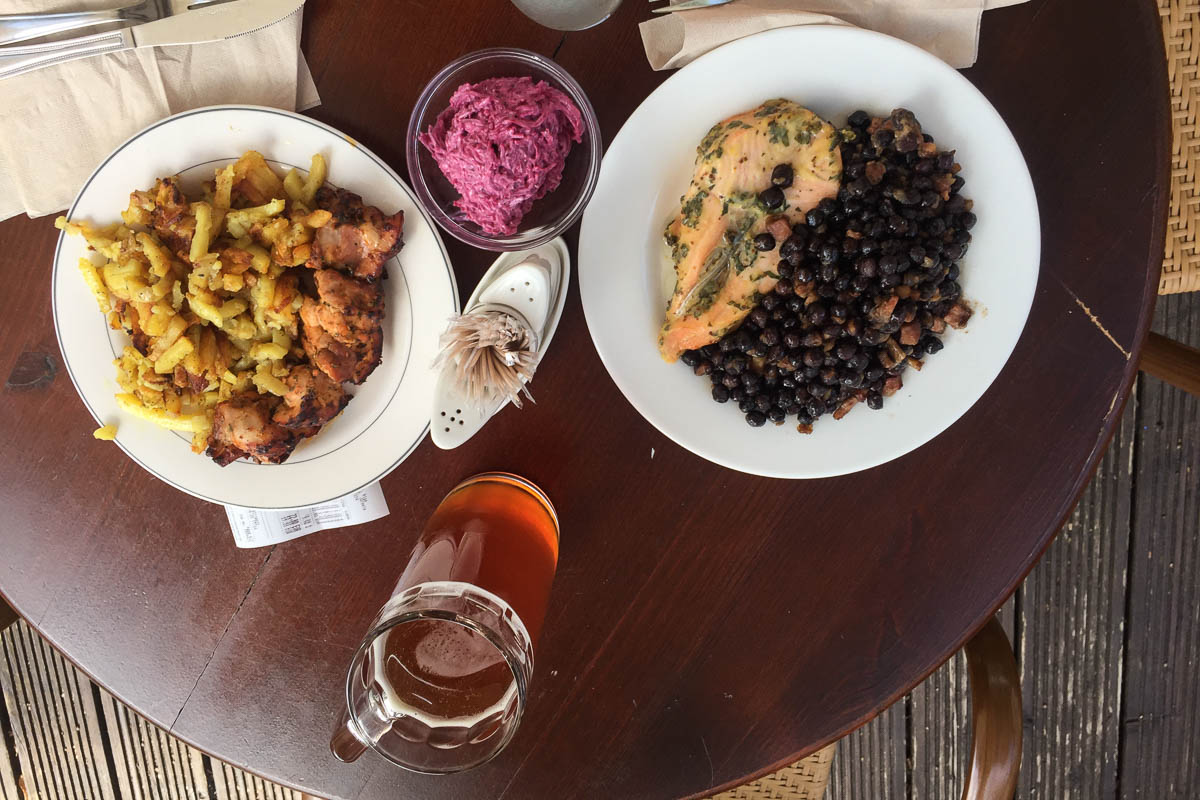
Some traditional dishes include shaslik (skewered meat), gray peas with speck (smoked bacon made from pork belly), and bread soup as dessert. The latter comes in different varieties depending on the season. Ann wanted to try this dessert, but it wasn’t meant to be. She was always too full when eating out, and Ian had no interest in it, so sharing was not an option. Potato pancakes are also popular, as are pelmeni dumplings, a cross between Italian tortellini and Polish pierogi.
As for alcoholic beverages, Latvia has decent beers, and we stopped in one day at a local brewery on our way home one afternoon. The national spirit is Black Balsam, a vodka-based liqueur made with a variety of herbs and berries…sad to report, we are not big fans. But we did enjoy the national brand Laima chocolate daily!
Speaking of Laima chocolate, we found the identical bars at different prices at four different grocery stores, usually less expensive than at the Laima store across the street from our apartment.
Side note about an experience in a grocery store: A rather extensive display of Mexican food products in one store prompted Ann to take a photo to send to some friends in Romania. They used to live in California and greatly miss good Mexican food. After taking the photo, Ann was reprimanded by a young male employee, who indicated that photos were strictly forbidden.
Meals Out in Riga
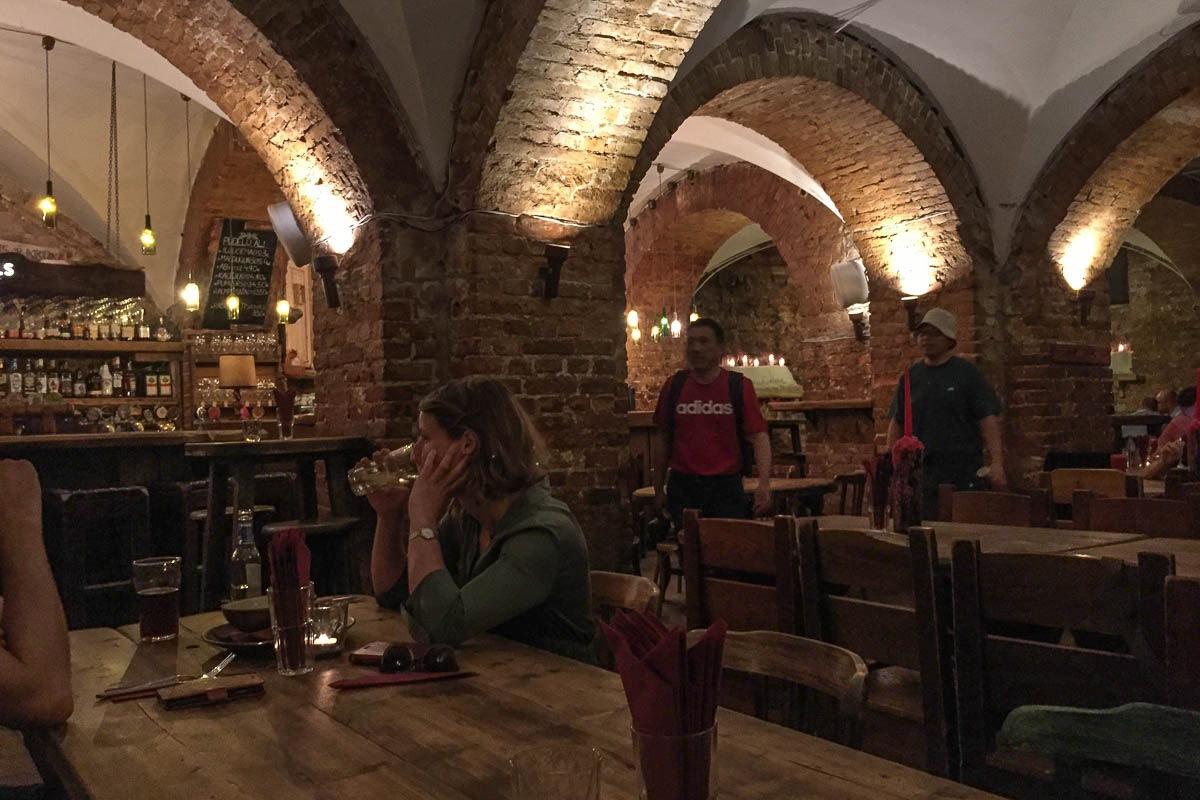
Upon request, our Airbnb host recommended restaurants serving traditional Latvian food. We tried Lido and Folkklubs, the former when we were out at the beach one day and the latter in the center of town.
Lido is a chain of cafeteria style restaurants serving traditional Latvian food at reasonable prices. At Lido, we both tried traditional dishes. Ian had shaslik, potatoes, and a local beer. Ann had fish, beet salad, and gray peas with speck – just had to try them! Although we both enjoyed our meals in a casual outdoor setting, we really enjoyed Folkklubs, at least on our first visit.
Folkklubs serves traditional and contemporary Latvian cuisine in an atmospheric setting. The below-ground-level restaurant is in what used to be ancient wine cellars. Folkklubs also offers the largest selection of Latvian beers in the country, and we enjoyed a couple of these. On our first visit, we had traditional potato and carrot pancakes and a seasonal beef sauté pan. The latter was local beef with potatoes, carrots, cabbage, and mushrooms served in the pan with grilled cheese and fresh garlic bread. Major yum!! Both dishes were delicious!
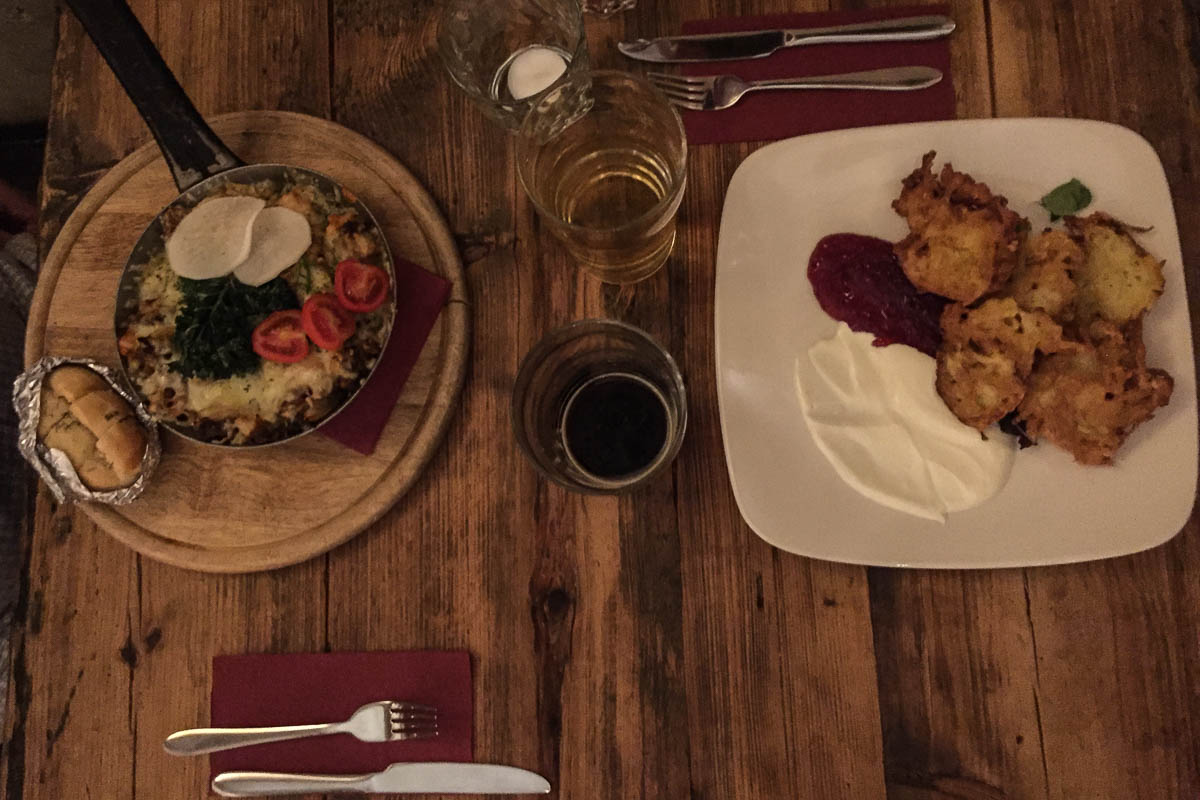
We liked it so much we went back another day and decided to try some other dishes. Although these were tasty, we wished we had ordered the same dishes as on the first visit.
A Special Meal in a Nearby Beach Town
On our second day trip to the beach, as we were walking from the train station, Ian noticed a sign for a Georgian food restaurant, Halipapa. (Not the southern US state, but the country – bonus points if you know where it is.) We had khinkali, the Georgian version of dumplings, and some meat and veggie casserole-type dish that was outstanding. And some excellent Georgian red wine – who knew?
Day Trips to the Beach
Getting to the beach near Riga is quite an enjoyable and inexpensive outing. Jūrmala is Riga’s nearby beach town, about a half hour train ride away, with several stops from which you can walk to the beach. The local train is somewhat old-fashioned and passes through pleasant-looking neighborhoods and wooded areas. As in Gdańsk, the trees and bike paths go right up to the beach.

The first day, we got off the train at a stop that put us somewhere in the middle of Jūrmala’s very long beach. We walked an hour and were not even close to the end of the beach. And what a special beach it is! Very soft, fine white sand, and clear water (a bit seaweedy is spots). The water was a bit chilly, calm and very clear, and formed unusual ripples in the sand beneath. It seemed that that one could walk out into the ocean forever and still be only up to the knees.

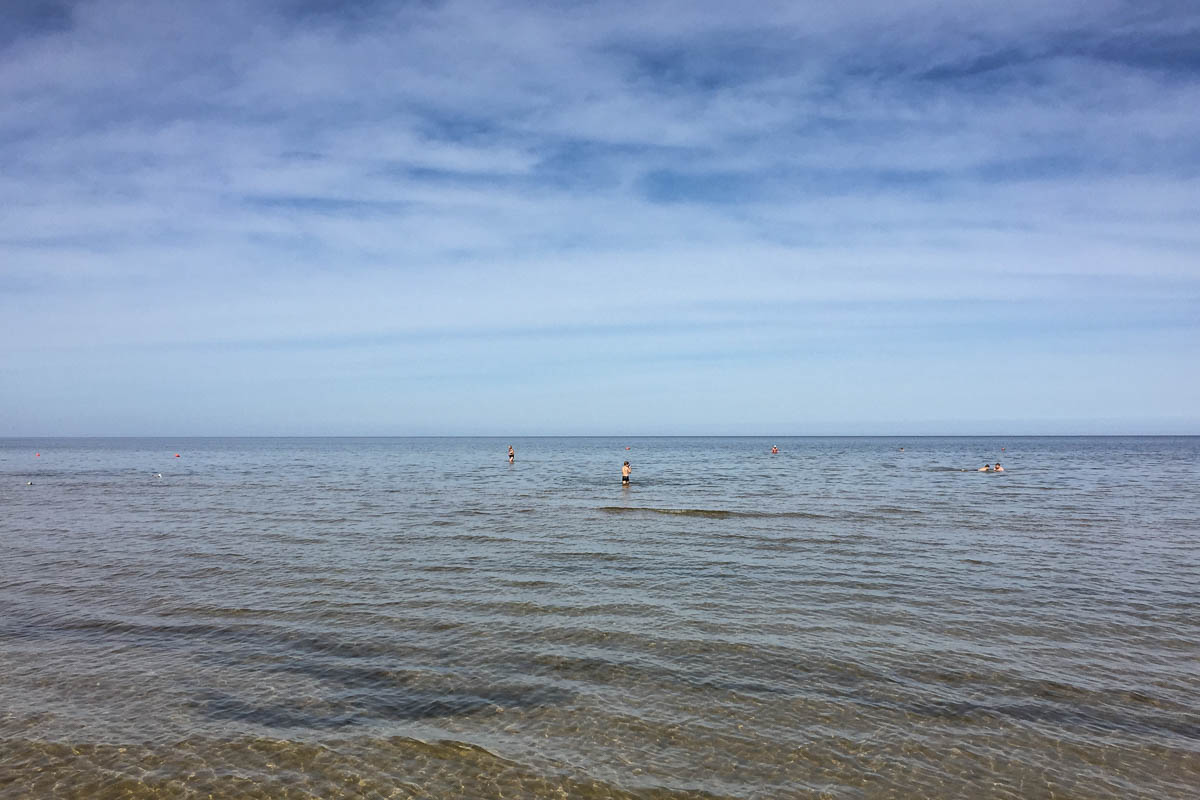
All along the beach, there were changing huts, porta potties, benches in the middle of the sand, shacks with LCD air temperatures, and kids’ playgrounds. Many parts of the beach were not the least bit crowded.
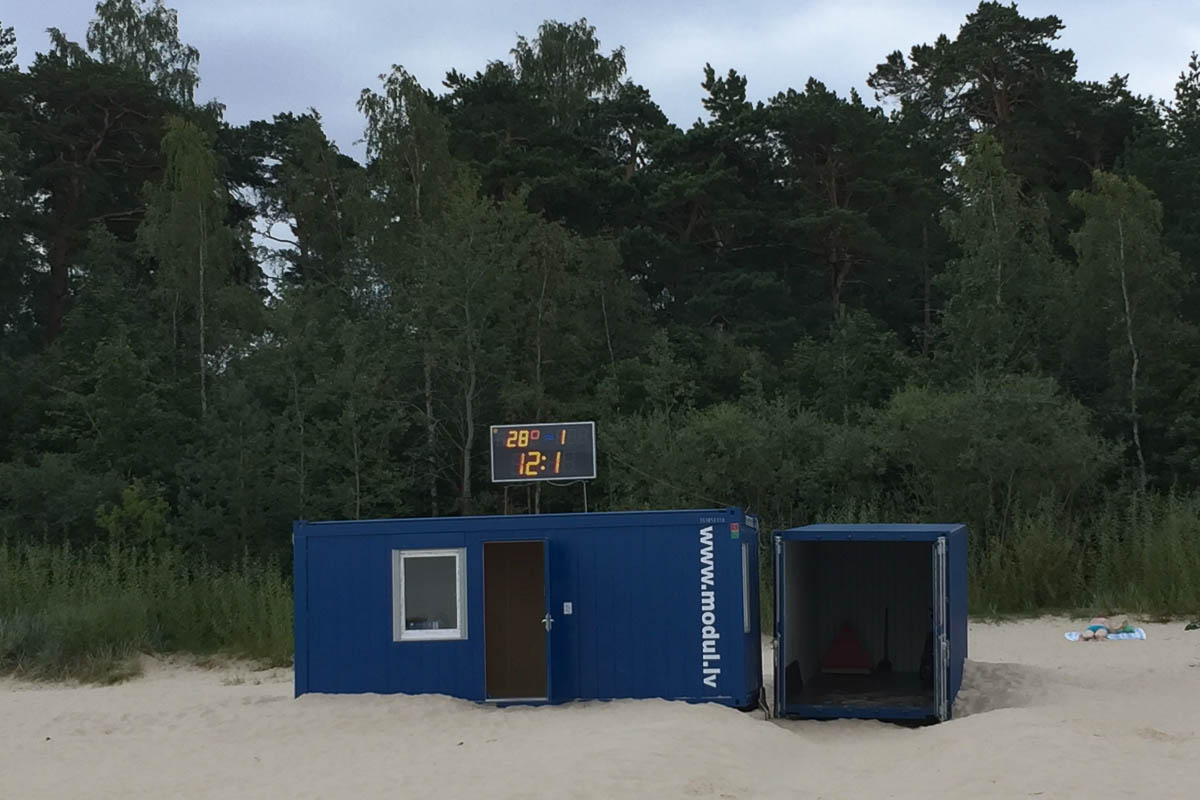
Going Back for More
The second day, we got off the train sooner and walked the beach in the opposite direction. We noticed a few rather large beachfront mansions. Exiting the beach near this area put us in the picturesque and seemingly somewhat upscale neighborhood of Bulduri. This was also the location of our delicious Georgian lunch. Walking through this neighborhood, Ann was surprised to see a modern, active synagogue, Beit Israel.
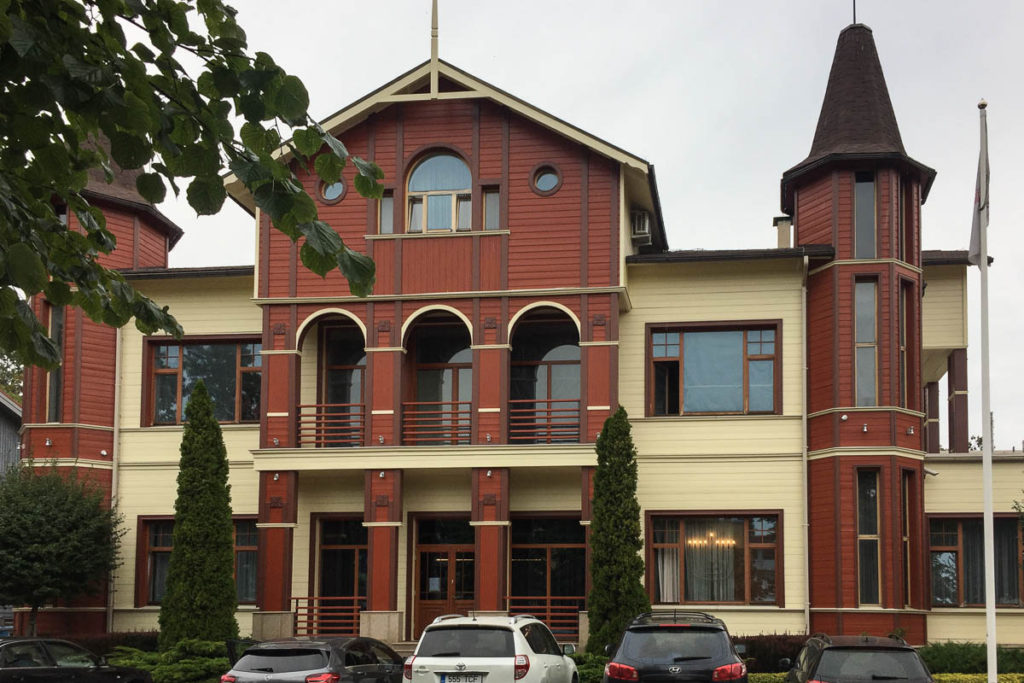
Riga Wrap-Up
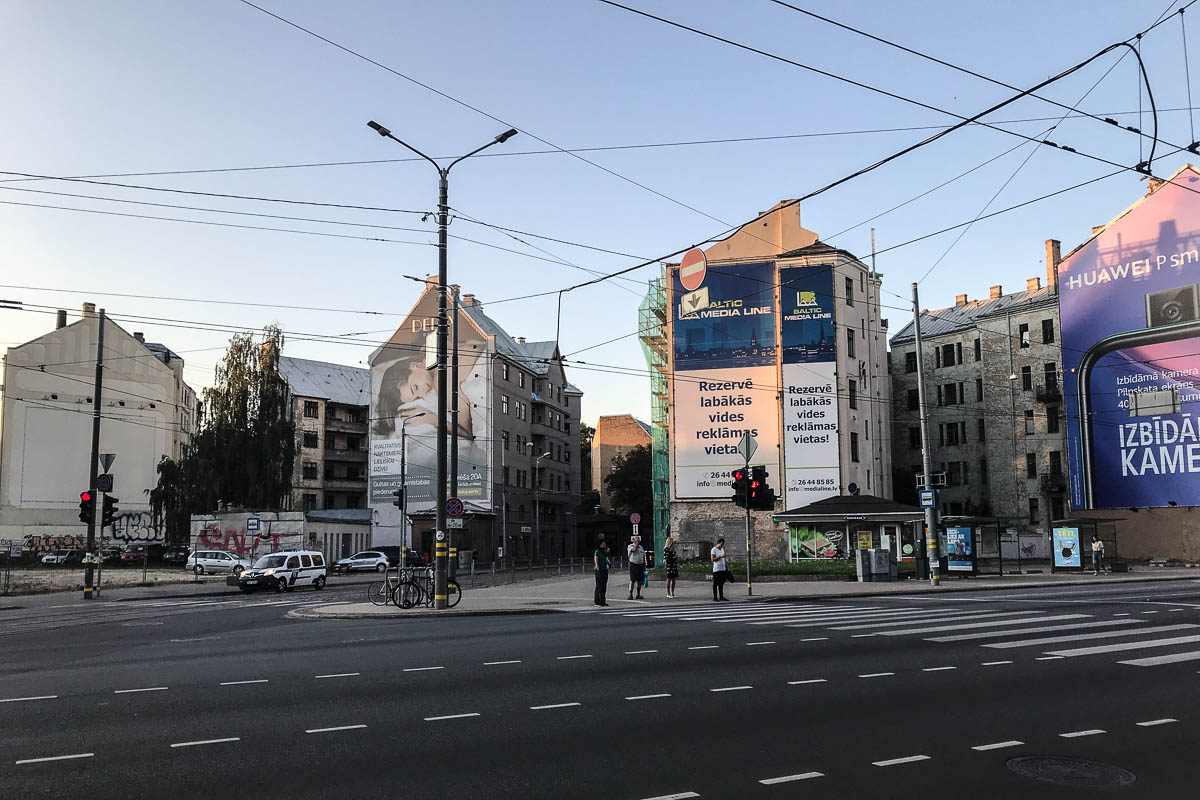
Prices in Latvia were similar to Poland for our three largest spending categories: accommodations, groceries, and eating out. While it took us a few days to warm up to Riga, by the end of our week we could see ourselves coming back here for an extended stay during the summer to be able to spend more time at the beach. However, we would position ourselves either at the beach or closer to the train station to cut down on our travel time
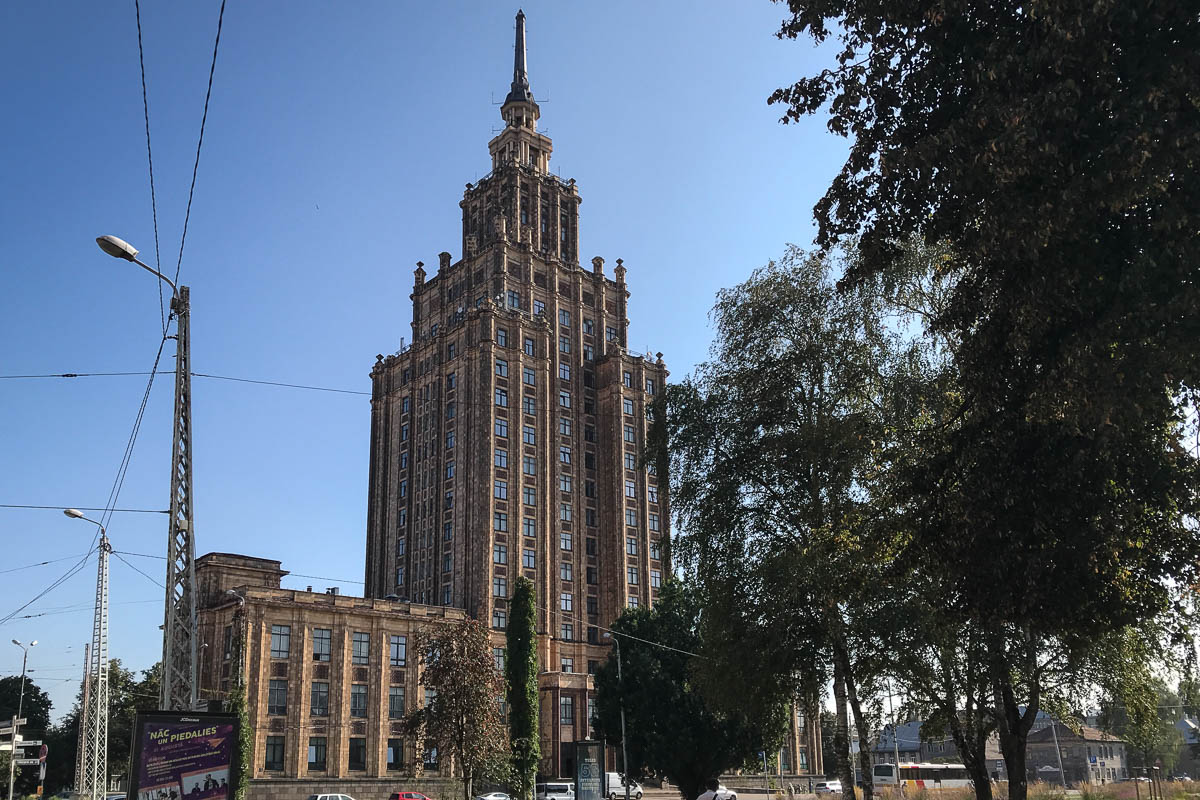
Now we have two possibilities for cooler August destinations with beaches: Gdańsk and Riga.
Next Up: More of the Baltics in Vilnius, Lithuania
Ian and Ann

8 Comments
Enjoyed your trip to Latvia. Hope you will write a book re your travels. I want to read it.
Hi Marge,
Good to hear from you, glad you’re still enjoying following us. Wouldn’t hold your breath about that book though. 🙂
Ian and Ann
So interesting to hear about these places off the main tourist routes. Thanks Ian and Ann~!
Hi Den,
Those are the kind of places we like to find and explore.
Ian and Ann
For some reason I find the former communist outposts interesting. I probably need to take a sociology course.
How are you both managing to keep track of all the places you visit? Do you journal daily, photos, discussions?
Hi Sharona,
Apologies for the late reply, we didn’t have Internet access on 15-day cruise.
We also find the former Communist outposts interesting. We keep track of places we’ve visited largely through photos, discussions, and Ian’s fantastic memory. 🙂
Ian and Ann
This trip must have been awhile back because people were able to swim. Was I looking at you most current post?
Hi Art,
Yes, you were looking at our latest post, we’re just a bit behind. 🙂 We were in Riga in August, we’re now in Singapore.
Ian and Ann